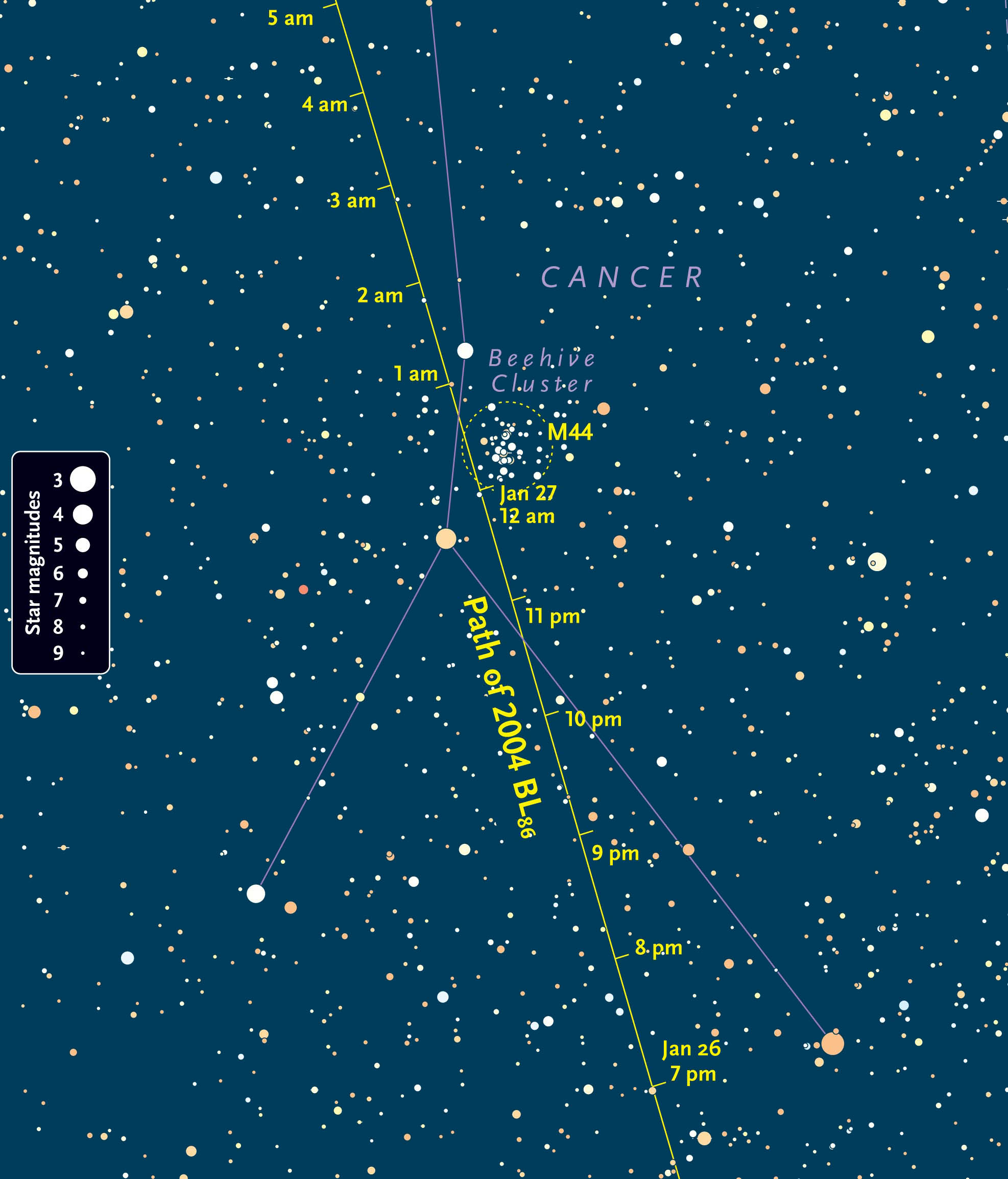Sky & Telescope | 2015 Jan 23
On Monday evening and early Tuesday morning, January 26-27, a relatively large asteroid will pass in the vicinity of Earth. This interplanetary visitor, designated 2004 BL86, is roughly a third of a mile across. By comparison, most near-Earth asteroids have diameters no larger than 50 to 100 feet. Fortunately, it is going by at a very safe distance of 745,000 miles (1.2 million km). That's about three times as far away as the Moon. Yet it's the largest known space rock predicted to come this close to us until 2027.
Because it's relatively large, 2004 BL86 will brighten rapidly as it approaches Earth. Astronomers predict it will become about 9th magnitude for several hours as it passes closest to us. This is still much too faint to be seen by eye, and it is beyond the reach of most binoculars. But this object should be bright enough to follow with a 3- or 4-inch-diameter telescope as it moves among the stars. ...
Observers in the Americas, Europe, and Africa have the best seats for seeing this interloper during its brightest time: from 8 p.m. Eastern Standard Time on Monday evening, January 26th, until about 1 a.m. EST on the 27th. During this time 2004 BL86 will be heading northward through the dim constellation Cancer. It skims the eastern edge of a star cluster called the Beehive (or Messier 44) from about midnight to 12:30 a.m. EST.
The asteroid's closest approach to Earth actually occurs hours earlier, around 11 a.m. EST on the 26th. But at that time it's predicted to be somewhat dimmer, about magnitude 10, because Earth will see only a portion of its illuminated side. The asteroid brightens, despite the increasing distance, because we're seeing its face become more fully illuminated.
The asteroid will be moving about 2.5° per hour while crossing Cancer. That's fast enough that you'll be able to see it moving in real time in a telescopic view whenever it passes close to a background star. ...
